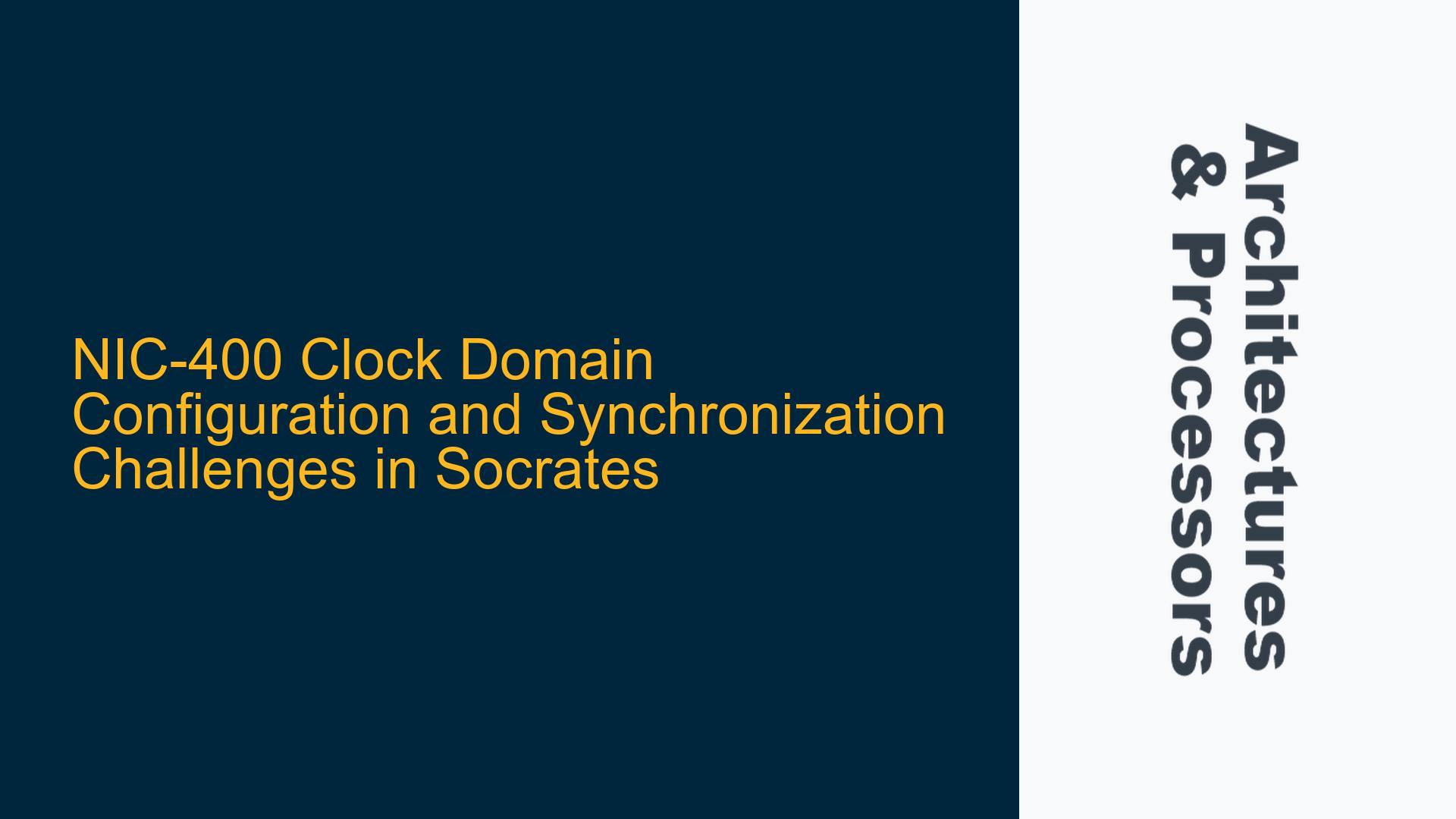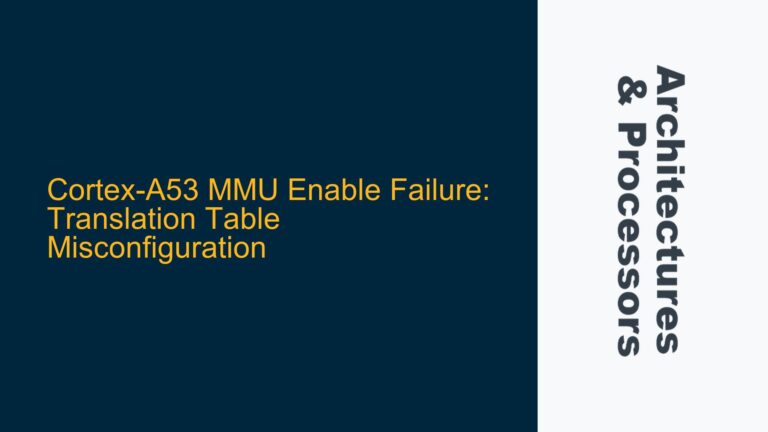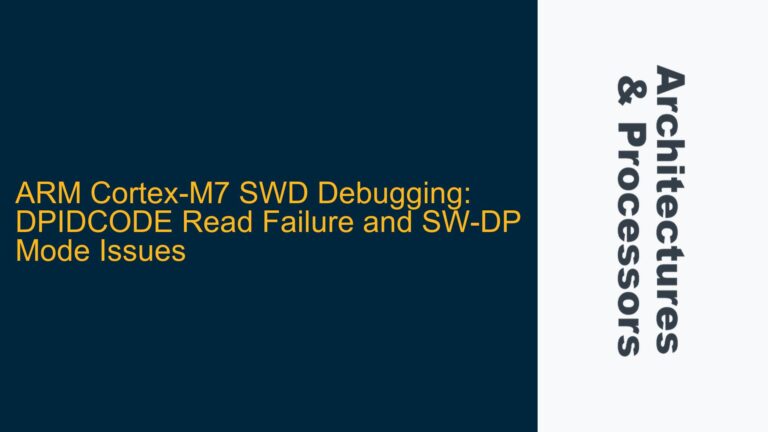Understanding NIC-400 Clock Domain Programmable vs Asynchronous Relationships
The NIC-400 interconnect is a highly configurable and scalable interconnect fabric designed by ARM, widely used in ARM-based SoCs. One of the critical aspects of configuring the NIC-400 is defining the clock domain relationships, especially when dealing with multiple asynchronous clock domains. The Socrates tool, which is used for configuring the NIC-400, provides options to define these relationships, but understanding the nuances between "Programmable" and "Asynchronous" settings is crucial for proper system operation.
When configuring clock domains in the NIC-400, the "Programmable" option allows the clock relationship to be changed at runtime through General Purpose View (GPV) accesses. This flexibility is useful in systems where the clock relationships might change dynamically, such as in power management scenarios where different parts of the system might be running at different clock frequencies or might be completely powered down. On the other hand, marking a clock domain as "Asynchronous" without selecting the "Programmable" option fixes the relationship as asynchronous, meaning that the relationship cannot be changed at runtime.
The key difference lies in the runtime flexibility. If the clock relationship between clk_a and clk_b is always going to be asynchronous, there is no need to select the "Programmable" option. However, if there is a possibility that the relationship might change during operation, such as transitioning from asynchronous to synchronous or vice versa, then the "Programmable" option should be selected. This allows the system to dynamically adjust the clock relationship as needed, providing greater flexibility but also introducing additional complexity in terms of verification and validation.
Implications of Unidirectional vs Bidirectional Clock Relationship Definitions
In the context of the NIC-400, defining clock relationships is not just about specifying whether two clocks are synchronous or asynchronous. It also involves understanding whether these relationships need to be defined bidirectionally or if a unidirectional definition is sufficient. The Socrates tool, like its predecessor AMBA Designer, typically requires only a unidirectional definition of the clock relationship. This means that if you define clk_a as asynchronous to clk_b, the tool automatically infers that clk_b is also asynchronous to clk_a.
This unidirectional definition simplifies the configuration process, but it also assumes that the tool correctly infers the inverse relationship. In most cases, this assumption holds true, but it is essential to verify that the tool has correctly interpreted the relationship, especially in complex systems with multiple clock domains. Misconfigurations in clock relationships can lead to subtle timing issues that are difficult to diagnose, particularly in systems with high-speed interfaces or stringent timing requirements.
The bidirectional definition of clock relationships is more explicit and leaves less room for misinterpretation by the tool. However, it also requires more effort during the configuration phase, as each relationship must be defined twice. This can be particularly cumbersome in systems with a large number of clock domains, where the number of relationships grows quadratically with the number of clocks. Therefore, the choice between unidirectional and bidirectional definitions should be based on the complexity of the system and the level of confidence in the tool’s ability to correctly infer relationships.
Best Practices for Configuring and Verifying NIC-400 Clock Domain Relationships
Configuring clock domain relationships in the NIC-400 is a critical step in ensuring the correct operation of the interconnect fabric. The following best practices can help mitigate potential issues and ensure a robust configuration:
-
Thoroughly Understand the System Clocking Requirements: Before configuring the NIC-400, it is essential to have a clear understanding of the system’s clocking requirements. This includes identifying all clock domains, their frequencies, and their relationships (synchronous or asynchronous). A detailed clocking diagram can be invaluable in this process.
-
Use the "Programmable" Option Judiciously: The "Programmable" option should only be used if there is a genuine need to change clock relationships at runtime. In most cases, fixed asynchronous relationships are sufficient and reduce the complexity of the system. If the "Programmable" option is used, ensure that the system software is capable of handling the dynamic changes in clock relationships.
-
Verify Clock Relationship Definitions: Whether using unidirectional or bidirectional definitions, it is crucial to verify that the Socrates tool has correctly interpreted the clock relationships. This can be done by reviewing the generated configuration files and performing simulations to validate the behavior of the interconnect fabric.
-
Perform Extensive Timing Analysis: Clock domain crossings (CDCs) are a common source of timing violations in SoCs. It is essential to perform extensive timing analysis to ensure that all CDC paths are properly synchronized. This includes checking for metastability issues and ensuring that appropriate synchronization circuits (e.g., FIFOs, handshake signals) are in place.
-
Leverage Formal Verification Tools: Formal verification tools can be used to rigorously verify the correctness of clock domain crossings. These tools can exhaustively check all possible timing scenarios, ensuring that there are no hidden timing violations that could lead to system failures.
-
Document the Configuration: Proper documentation of the clock domain configuration is essential for both the initial design and future maintenance. This includes documenting the rationale behind the chosen clock relationships, any assumptions made, and the results of the verification process.
By following these best practices, designers can ensure that the NIC-400 is correctly configured and that the system operates reliably under all expected conditions. Proper configuration and verification of clock domain relationships are critical to the success of any ARM-based SoC, and the NIC-400 provides the flexibility and scalability needed to meet the demands of modern embedded systems.
Conclusion
Configuring clock domain relationships in the NIC-400 interconnect is a complex but essential task in ARM-based SoC design. Understanding the differences between "Programmable" and "Asynchronous" settings, as well as the implications of unidirectional vs bidirectional clock relationship definitions, is crucial for ensuring the correct operation of the interconnect fabric. By following best practices and performing thorough verification, designers can mitigate potential issues and ensure a robust and reliable system. The NIC-400, with its flexibility and scalability, provides the foundation for building high-performance, power-efficient SoCs that meet the demands of today’s embedded systems.






